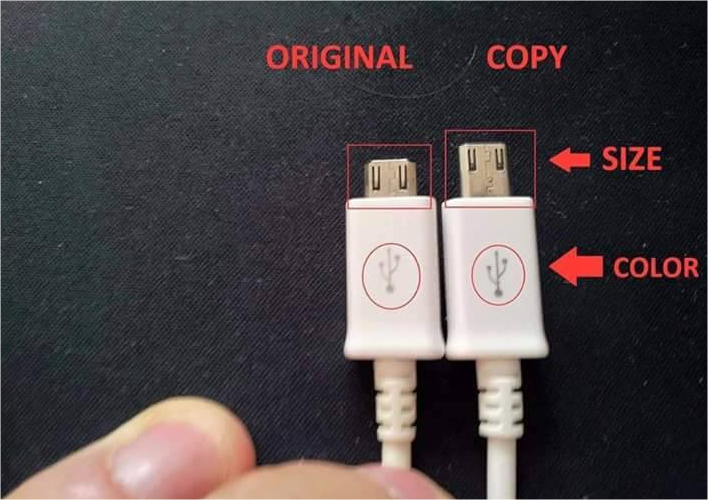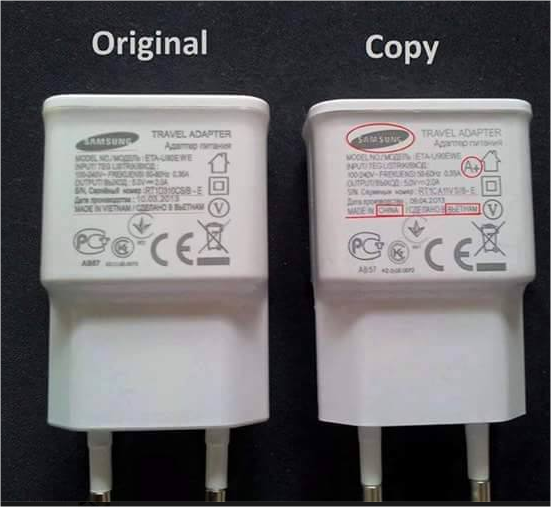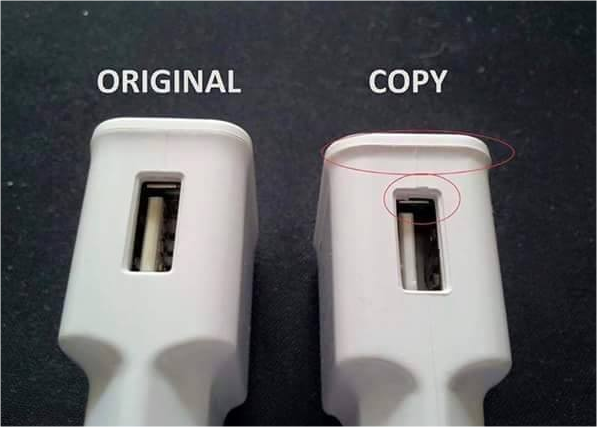Charging your phone is not about finding a cable and plug that fit. Some chargers take much longer to fill your battery. Others damage your device. The fake charger that you purchased may actually be killing the battery that it was working to revive.

Fortunately, there are precautions to take when buying a charger.
Mobile phone chargers have a primary task to supply your device with power. They do so by activating the charging circuitry, which reinvigorates your drained battery. Because of this, chargers are better called adapters because their job isn't just to charge your device, but to convert dc power to a level that your phone or tablet can safely handle.
While power adapters may seem like transparent cords, the process behind them isn't so clear-cut. There are multiple parts inside the plug. For example, a regulator communicates to the charger when your device is full so that it doesn't try to continue to provide power. If you continually overcharge your device, you will shorten its lifespan.
Chargers protect your phone from power spikes or drawing too little power. Corrupt ones can trick your phone into thinking it's charging, but an hour later, you find that all the adapter did was keep the lights on.
It's no secret that Apple's chargers are overly expensive, but the Chartered Trading Standards Institute performed a test and found that 397 of the 400 chargers purchased online failed a basic safety test.

Most inexpensive chargers do not meet certain regulatory standards and may contain harmful materials that threaten you or the environment. Fake chargers can even be physically defective, including prongs that come out when you attempt to unplug them from the wall.
Thankfully, you're less likely to find fake chargers at regular stores. Here are tips so that you get the most out of your device's battery:
Have your official charger with you at all times
While most of us have several microUSB chargers, it's definitely worth using the one that came with your phone or tablet. Carry it around with you so that you can use the same adapter outside of your home. If you keep the cable in satisfying condition, this step is the simplest you can take without having to dive into how chargers work.
Check input and output levels
The charger that comes with your device supplies it with the ideal amount of power. If you need a second adapter, check that the input and output levels match the one that your phone came with.
An input level of 100 to 240 V displays an adequate amount of voltage. If you plug it into an outlet or source above this range, you risk destroying the charger. As for output levels, if your battery only needs 4.2 V to fully charge, you’ll need a power adapter that can reach that level. A charger that outputs 3 V cannot properly charge a 4.2-V battery, which explains why your five-year-old adapter may not work with your latest phone.
Lastly, you’ll need to check amperage. Most smartphone chargers supply an output of 1 A; any device that requires less than 1 A will extract only what it needs. However, if your charger only provides 500 mA, a phone that needs more will not only charge more slowly but also get damaged. Some devices won't even accept a charger that doesn't provide enough power.
Look for certifications
Certifications like CE present a manufacturer's obligation to meet the standards of a given practice or area. For example, RoHS certification shows that a product doesn't contain hazardous materials. These commitments indicate that a product is less likely to damage your device, your home, and the environment.
If you are an iPhone owner, search for the Made for iPod logo, Apple's licensing program that creates parts and segments for its products. Contrary to the name, this holds true for the iPhone and iPad as well.
Compare your chargers side by side
Another relatively easy step that you can take is to compare your secondary charger with the one that came with your phone. While some fake chargers can be rather convincing, often including the same brand name and a few certifications, they do not contain all of the ones that the real ones do. Visually, the noticeable difference may come down to a few words.

First, compare the weight of the two chargers. Tap on them to inspect how they sound. Of course, these steps aren't crucial in comparing the official charger to the third-party one, but they can help if you believe that you've purchased a fake.
It's important to remember that smartphones aren't known for having the longest battery life, but if your device drains fast and charges slowly, your adapters may be the culprit.
Source: MakeUseOf
To learn more about simplifying power designs, register for the free webinar, “Simplify Power Designs with Micromodules Products” sponsored by Analog Devices
Advertisement
Learn more about Electronic Products Magazine





